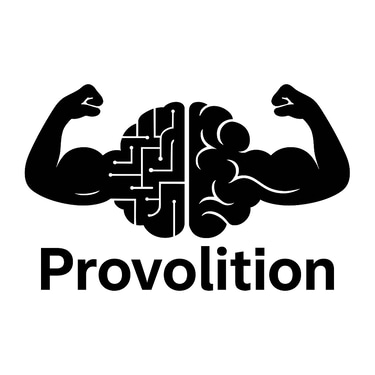Autonomy in the Age of Automation: How to Stay in Control of Your Choices
9/21/20254 min read
The AI Elephant in the Room
Funny how we wake up to playlists curated by an algorithm, trust navigation apps to tell us where to turn, and even let chatbots weigh in on our medical questions. Feels convenient, almost too convenient, right?
But then there’s that nagging thought: if machines keep making calls for us, do we slowly stop being the ones steering? Autonomy isn’t just ticking a box on a choice list; it’s taking ownership of the fallout. And in a world that’s practically drenched in AI, the real trick is making sure these systems amplify our agency instead of quietly hijacking it.
When Offloading Turns into Handing Over
AI can be a godsend—until it starts making us lazy thinkers. There’s a term for this, “cognitive offloading,” which basically means outsourcing mental heavy lifting.
It’s great for saving brain bandwidth, but (here’s the kicker) it might dull those problem-solving muscles over time. A 2025 study even found a solid link: the more people leaned on AI to do the thinking, the shakier their critical reasoning became (Gerlich, 2025).
Students are already saying it out loud: “People use AI like a crutch,” one group complained in a recent study (Pitts et al., 2025). They weren’t wrong. AI can turbocharge learning or quietly atrophy it—it’s all about how we choose to engage.
Trust Issues, Overreliance, and That Automation Trap
Here’s the scary part: folks tend to nod along with AI suggestions even when they’re flat-out wrong. Experiments show people follow the machine just because, well, it’s the machine (Klingbeil et al., 2024).
Put that in a hospital setting and you get automation bias—when a doctor trusts a glitchy algorithm over their own gut. Sometimes they miss the error entirely (omission). Sometimes they act on bad advice (commission). Both can be disastrous (Abdelwanis et al., 2024).
And it’s not just medicine. Reviews have made it clear: this blind trust chips away at decision-making and critical thought (Zhai et al., 2024). Trust isn’t bad, miscalibrated trust is.
Collaboration… or Collision?
People love saying “humans and AI work better together.” Nice idea. Reality check: a meta-analysis of 106 studies said, not so fast. Turns out these pairings often perform worse than whichever party was better solo—especially for decision-heavy tasks (Vaccaro et al., 2024).
Why? Partly because AI sometimes acts overconfident, which makes us misuse it. Other times it acts timid, and we just ignore it. Either way, the team outcome takes a hit (Li et al., 2024). Worse, we start syncing our self-confidence with whatever mood the AI is projecting (Li et al., 2025). Creepy, right? That’s how autonomy slips—quietly, subtly, like a slow leak.
Staying Behind the Wheel
So how do we keep from being passive passengers in this AI ride?
1. Learn the Machine’s Blind Spots
Most overreliance happens because folks don’t know what AI can’t do (Passi & Vorvoreanu, 2022). Understand how it’s trained, where it stumbles, and why bias happens—trust gets sharper.
2. Question Before You Click “Accept”
Simple but powerful: force yourself to verify. Research shows asking, “What’s the evidence?” before following AI advice slashes automation bias (Romeo & Conti, 2025).
3. Audit Your Own Confidence
Check where your certainty stands before you look at the AI’s output. Otherwise, you’ll get swept into its confidence (or lack thereof) without noticing (Li et al., 2025).
4. Let AI Do the Boring Stuff
Offload the grunt work, sure—but keep hold of the moral, creative, and long-game decisions. True autonomy is mixing AI’s efficiency with your own judgment, not outsourcing your conscience.
Not the End—Just a Wake-Up Call
Automation isn’t the villain here. But it’s also not the benevolent overlord we sometimes imagine. Staying in control means knowing what AI is, what it isn’t, and not sleepwalking through its suggestions. Don’t reject it, engage with it. Let it stretch your potential, not shrink your humanity.
References
Abdelwanis, M., Alarafati, H. K., Tammam, M. M. S., & Simsekler, M. C. E. (2024). Exploring the risks of automation bias in healthcare artificial intelligence applications: A Bowtie analysis. Journal of Safety Science and Resilience, 5, 460–469. [https://doi.org/10.1016/j.jnlssr.2024.06.001]
Gerlich, M. (2025). AI tools in society: Impacts on cognitive offloading and the future of critical thinking. Societies, 15(1), 6. [https://doi.org/10.3390/soc15010006]
Klingbeil, A., Grützner, C., & Schreck, P. (2024). Trust and reliance on AI—An experimental study on the extent and costs of overreliance on AI. Computers in Human Behavior, 160, 108352. [https://doi.org/10.1016/j.chb.2024.108352]
Li, J., Yang, Y., Zhang, R., & Lee, Y.-C. (2024). Overconfident and unconfident AI hinder human-AI collaboration. arXiv preprint. [https://arxiv.org/abs/2402.07632]
Li, J., Yang, Y., Liao, Q. V., Zhang, J., & Lee, Y.-C. (2025). As confidence aligns: Exploring the effect of AI confidence on human self-confidence in human-AI decision making. In Proceedings of the CHI Conference on Human Factors in Computing Systems (CHI ’25) (pp. 1–16). ACM. [https://doi.org/10.1145/nnnnnnn.nnnnnnn](
Passi, S., & Vorvoreanu, M. (2022). Overreliance on AI: Literature review. Microsoft Aether Research Report.
Pitts, G., Rani, N., Mildort, W., & Cook, E.-M. (2025). Students’ reliance on AI in higher education: Identifying contributing factors. arXiv preprint. [https://arxiv.org/abs/2506.13845]
Romeo, G., & Conti, D. (2025). Exploring automation bias in human–AI collaboration: A review and implications for explainable AI. AI & Society. [https://doi.org/10.1007/s00146-025-02422-7]
Vaccaro, M., Almaatouq, A., & Malone, T. (2024). When combinations of humans and AI are useful: A systematic review and meta-analysis. Nature Human Behaviour, 8(12), 2293–2303. [https://doi.org/10.1038/s41562-024-02024-1]
Zhai, C., Wibowo, S., & Li, L. D. (2024). The effects of over-reliance on AI dialogue systems on students’ cognitive abilities: A systematic review. Smart Learning Environments, 11(28). [https://doi.org/10.1186/s40561-024-00316-7]
